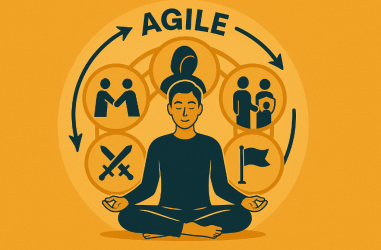
In the world of business, results matter. Everyone has goals to achieve, although there are many ways to achieve them. Unfortunately, we often encounter various obstacles, the most common of which is different visions of how to reach our goal. We work in a team, in an organization with a large number of dependencies and connections. It is difficult to achieve consistency in such conditions.
Research on the amount of time spent on resolving conflicts in the workplace* shows that we spend an average of 3 hours a week arguing. Many people avoid conflict. Others tend to escalate conflicts. In both cases, the consequences are frustration, stress, and even burnout. In my professional work, I have observed various conflicts – some of them lasted for years.
However, there is a way to alleviate disputes and even resolve them 🙂
Mediation
In the context of improving business communication, mediation stands out as a powerful tool. Mediation is a process in which an independent and unrelated person helps the parties to resolve the dispute, supporting dialogue and joint search for solutions.
The benefits of mediation include:
Effective Solutions: Mediation helps find solutions that take into account the perspectives of both parties, leading to a lasting agreement.
Saving Time: Instead of wasting time on unproductive arguments, mediation allows you to quickly and effectively transform conflicts into opportunities for growth and development.
Improving Relationships: Mediation strengthens relationships between team members, creating a solid foundation for effective collaboration.
Increasing Effectiveness: Thanks to mediation, teams are able to focus on achieving business goals, eliminating barriers to success.
Mediation is not a secret science. Anyone who is open to understanding the other party can acquire knowledge and the ability to resolve conflicts. It is worth talking about it so that the conflict does not become a taboo topic, so that everyone has the opportunity to express their opinion, even if it is the beginning of a confrontation. Practicing this type of conversations, e.g. during workshops or conversations with a supportive leader, may be an introduction to greater openness to conflicts in the organization.
If you want to learn more about conflict resolution options in your company, contact me.
—
* – Workplace Conflict Statistics https://pollackpeacebuilding.com/workplace-conflict-statistics/
– Michał Chmielecki, Konflikt w miejscu pracy https://static1.squarespace.com/static/53737c34e4b060b2a3d07162/t/55d71ca8e4b03c34fe844453/1440160936333/Konflikt+w+polskich+organizacjach+raport+2015+08+22.pdf



